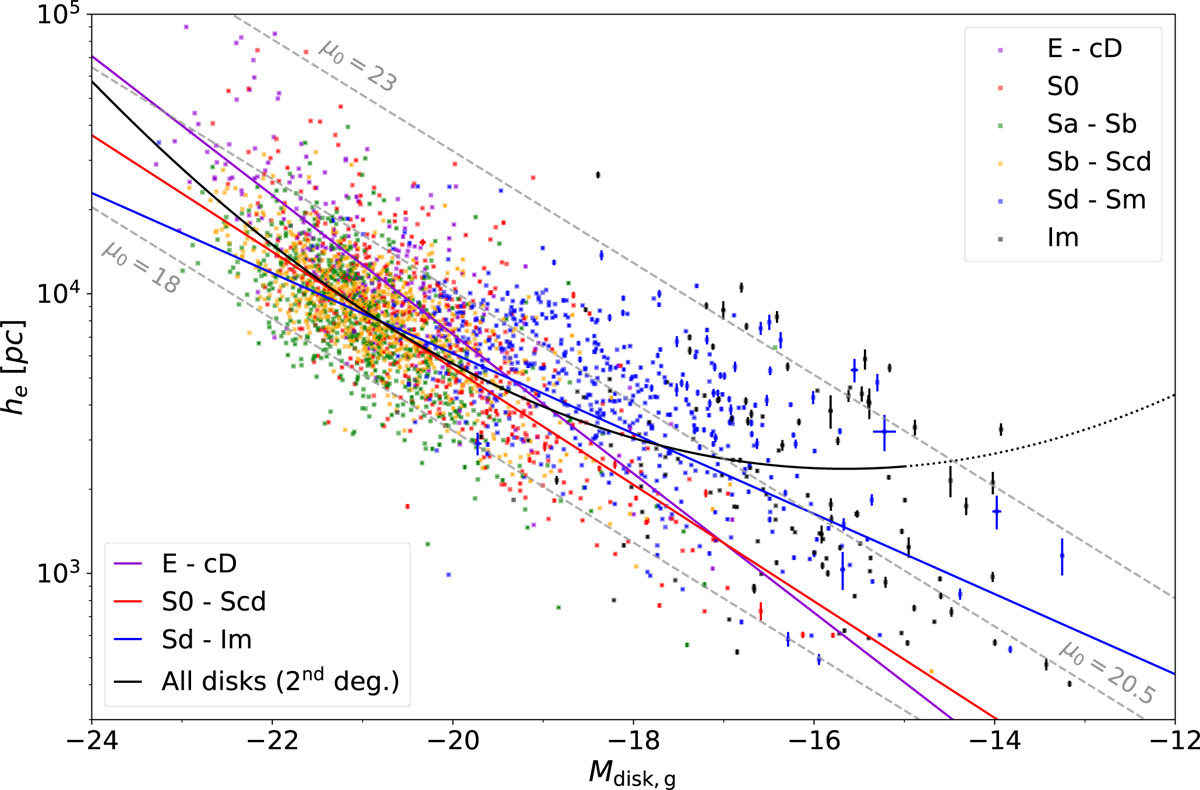Fig. 11.

Download original image
Effective disk radius versus absolute g magnitude for the EFIGI disk (or exponential) components. The color of the points correspond to groups of Hubble type. Dashed gray lines are iso-μ0 lines, of slope −0.2, which for an exponential profile corresponds to a disk luminosity scaling as ![]() . They allow to see that disks span ∼6 dex in central surface brightness at all magnitudes. The solid lines are ODR fits: three linear models for disks of types E-cD, S0-Scd and Sd-Im, in purple, red and blue respectively, whereas the black line is the second degree polynomial fit of log he as a function of Mdisk, g for all disks. The size–luminosity relation is close to an iso-surface brightness growth for lenticulars as well as early and intermediate spirals, but there is a tail of faint disks for (dimmer) late-type spirals and irregulars with a larger size than earlier spirals at these faint magnitudes, for M > −19.
. They allow to see that disks span ∼6 dex in central surface brightness at all magnitudes. The solid lines are ODR fits: three linear models for disks of types E-cD, S0-Scd and Sd-Im, in purple, red and blue respectively, whereas the black line is the second degree polynomial fit of log he as a function of Mdisk, g for all disks. The size–luminosity relation is close to an iso-surface brightness growth for lenticulars as well as early and intermediate spirals, but there is a tail of faint disks for (dimmer) late-type spirals and irregulars with a larger size than earlier spirals at these faint magnitudes, for M > −19.
Current usage metrics show cumulative count of Article Views (full-text article views including HTML views, PDF and ePub downloads, according to the available data) and Abstracts Views on Vision4Press platform.
Data correspond to usage on the plateform after 2015. The current usage metrics is available 48-96 hours after online publication and is updated daily on week days.
Initial download of the metrics may take a while.


